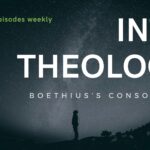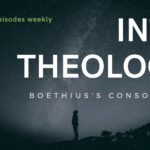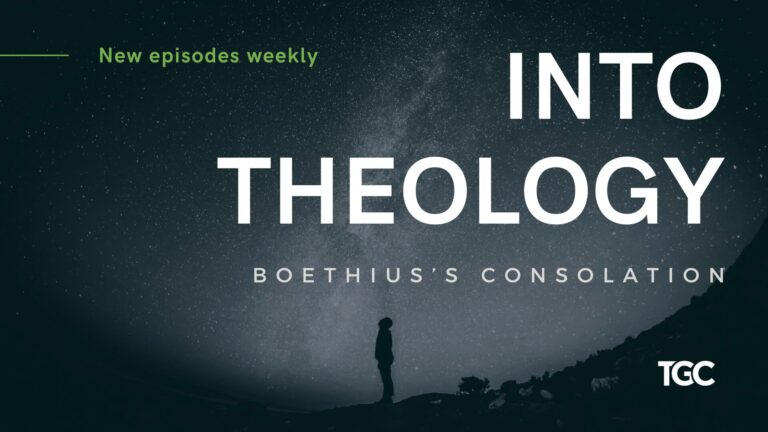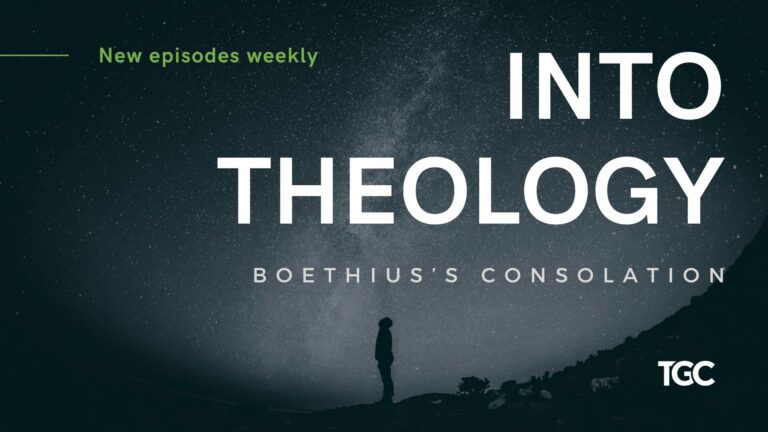When Jesus rose from the dead, scars stretched across his palms. Even now, the marks of the cross remain on his body. He still has them. When the Word became human, he united to our nature for good. He was, is, and forever will be Jesus of Nazareth.
Why did God do this? Why is it so important that Christ forever has united to humanity?
Early Christians
Ignatius (d. ~ 107 AD) pastored Paul’s sending church in Antioch. Although they may not have known each other, Ignatius was the contemporary of other apostles and disciples of Jesus and was certainly influenced by Paul’s church.
Following the apostolic preaching of Christ, Ignatius affirmed that “There is one Physician who is possessed both of flesh and spirit; both made and not made; God existing in flesh; true life in death; both of Mary and of God; first passible and then impassible — even Jesus Christ our Lord” (IgnEph 7). The incarnation played a key role not just in identifying who Jesus was but also for our salvation.
In particular, Ignatius has penned one of the most beautiful sentences ever written while being escorted to his execution in Rome. In a letter sent before his arrival, he tells the Roman Christians to let him die. He explains: “Let me receive the pure light, for when I arrive there I will be a human being” (IgnRom 6:2).
What in the world does it mean to become “a human being”? Is he not a human already? In fact, none of us really are. We were created as human beings, but we lost the fullness of our nature. Though the sin of Adam, death now corrupts our bodies, and sin spoils our souls.
It took a second Adam to become fully human and to show us what it means to be human. In his body of flesh, he started a new creation (2 Cor 5:17). He is the firstfruits of the dead (Col 1:18). In the resurrection, we will follow our firstfruits as the full harvest. We will become incorrupt and immortal (1 Cor 15:53).
It matters then that Christ remains human even after his ascent into heaven because we follow him as humans. In short, at the resurrection, we will all become “human beings.” We will become what Christ is in his glorified body. I suspect Ignatius had something like this in mind.
And such teaching did not stop with Ignatius. Writing about eighty years after Ignatius, Ireneaus (130–202 AD) recounts the body of truth that Christians from Spain to Asia confessed (AH I). He calls this summary of Christianity the canon of truth. What strikes me as particularly interesting is his affirmation of a “bodily ascent” into heaven. As Irenaeus affirms, Jesus has a real human body when he ascended into heaven. His bodily ascension lies at the heart of the rule of truth, that is, the Gospel.
Christians in line with the apostolic preaching contained in the New Testament continued to affirm the bodily ascent into heaven. It was central.
Chalcedon
Ignatius knew that Jesus was “God existing in flesh” because John (his contemporary) taught that “the Word became flesh” (John 1:14). Every baptized Christian knew this to some degree because they were baptized into the singular name of the three: Father, Son, and Holy Spirit (Matt 28:19).
Yet it took Christians some time to settle on the right language to explain Christ’s union of humanity and divinity. In 451, the Council of Chalcedon used mature and yet venerable language to define the union. Christ was said to hypostatically unite both humanity and divinity.
The Greek word hypostasis could imperfectly be translated as “person.” So simply put, God and man united in one person, Jesus. But this union did not mix or confuse humanity and divinity. They remained what they were. The union joined the two without confusion. The Spirit forged the union into one single subject, the one person who is Jesus.
It was important to keep the two natures unconfused. For our salvation relies on Jesus redeeming our whole selves—our sinful wills, our broken bodies, our finite lifespan, our mortality, and so on. Christ is a true human and became so in order to recreate humanity in the image of God (Col 3:10; Eph 4:24).
The reason why the cross can forgive us is because Christ the spotless lamb died as a human being to satisfy our debt to divine justice. Then he rose from the grave to conquer death and glorify our human bodies, making them immortal and incorrupt (1 Cor 15:53).
Reformation
The bodily ascent became a cornerstone of Christian thought throughout its history. This pillar did not budge at the Reformation. In fact, the great Reformer Girolamo Zanchi (1516–1590) wrote: “by the Spirit of Christ we, although remaining on the earth, yet are truly and really coupled with the body, blood and soul of Christ, reigning in heaven.”
For Zanchi, Christ’s humanity must be truly in heaven since we unite to that humanity by faith via a Spiritual union. By analogy, this union works like the Spirit’s activity of hypostatically uniting divinity and humanity in mary’s womb. Hence, we become so united to Christ that we can say, “It is no longer I who live, but Christ who lives in me” (Gal 2:20).
As in the New Testament and so in later Christian reflection, what Jesus is and does is for us and for our salvation. As the firstborn of the dead, we follow him from the dead. As being incorrupt and immortal by the resurrection, we follow Jesus and become incorrupt and immortal (1 Cor 15:53).
All of this comes by way of Spiritual union that works, by analogy, similarly to the Spirit’s union of God and man in the person of Jesus. Zanchi explains:
Christ united himself to humanity so that “the bond through which Christ is coupled with us and we with Christ might be the same Spirit of Christ, which, as it did bring to pass in the womb of the virgin that the Son of God should be made flesh of our flesh, and bone of our bones, so also by working in our hearts and incorporating us into Christ it brings to pass that we likewise, by participation of the body and blood of Christ, should be bone of His bone and flesh of His flesh, especially seeing He stirs up that faith in us whereby we acknowledge and embrace Him for true God and man, and therefore a perfect Savior” (I modernized the language)
So what?
So everything. Christ became human—he was born of a virgin—for us. His hypostatic union provides an analogy to our union with him because the same Spirit effects both unions. As the apostle Paul, Ignatius, Ireneaus, Chalcedon, and the Reformers taught, this changes everything.
We become new creations: “Therefore, if anyone is in Christ, he is a new creation. The old has passed away; behold, the new has come” (2 Cor 5:17). All of this comes by way of Christ’s persistent humanity that by the spirit we unite to.
Small wonder then the earliest Christians included Christ’s bodily ascent into heaven! Without it, there is no salvation.












